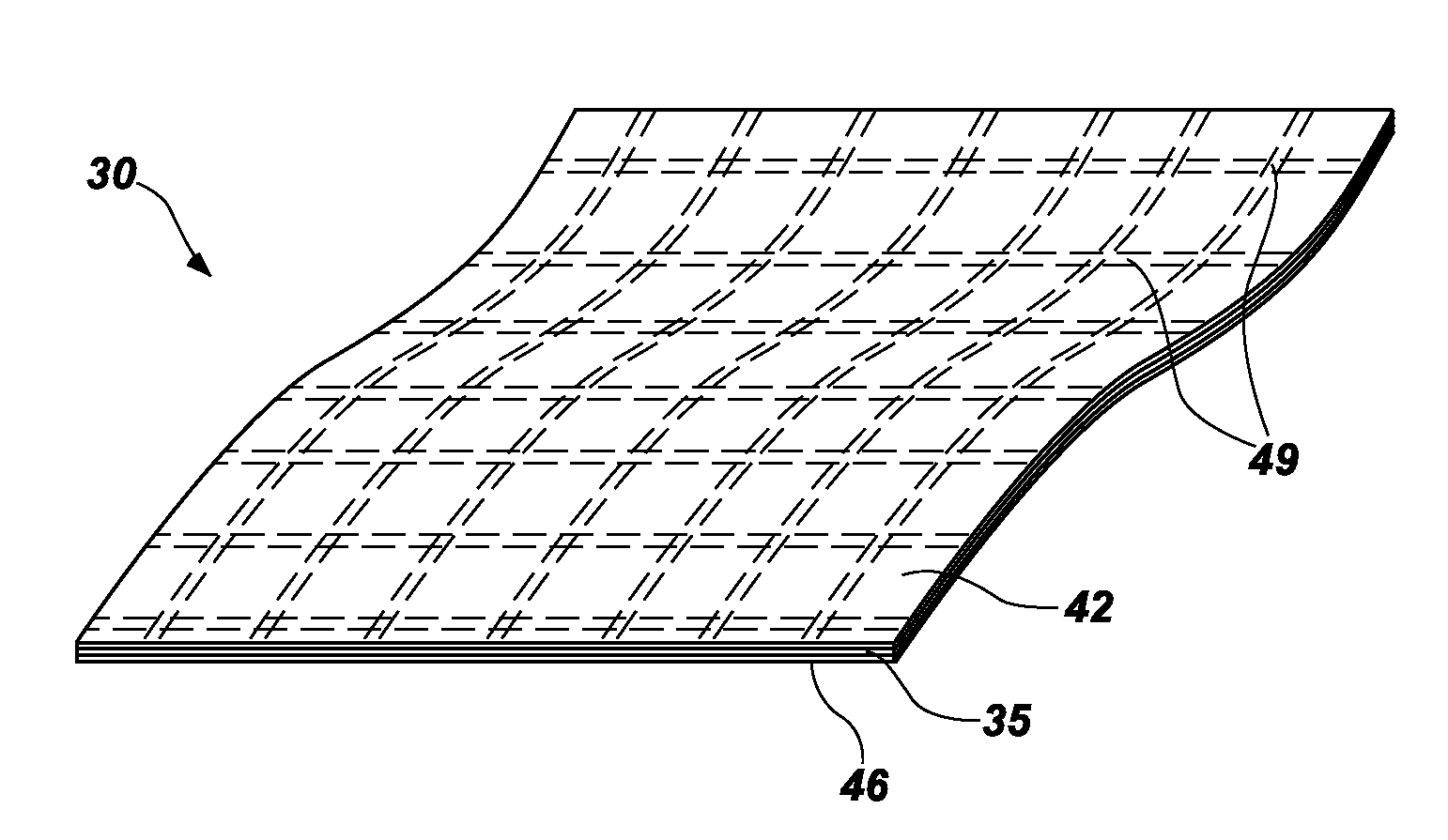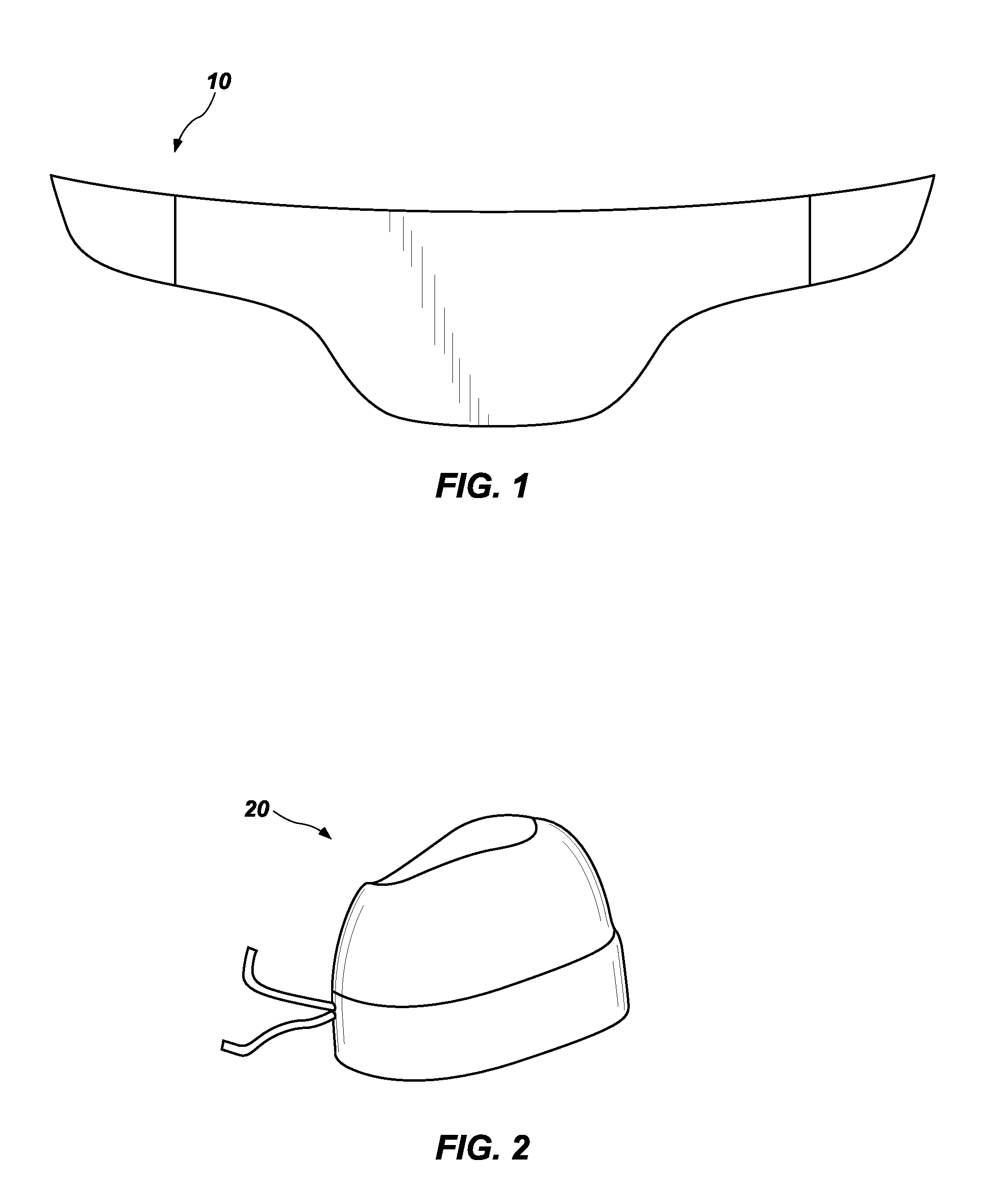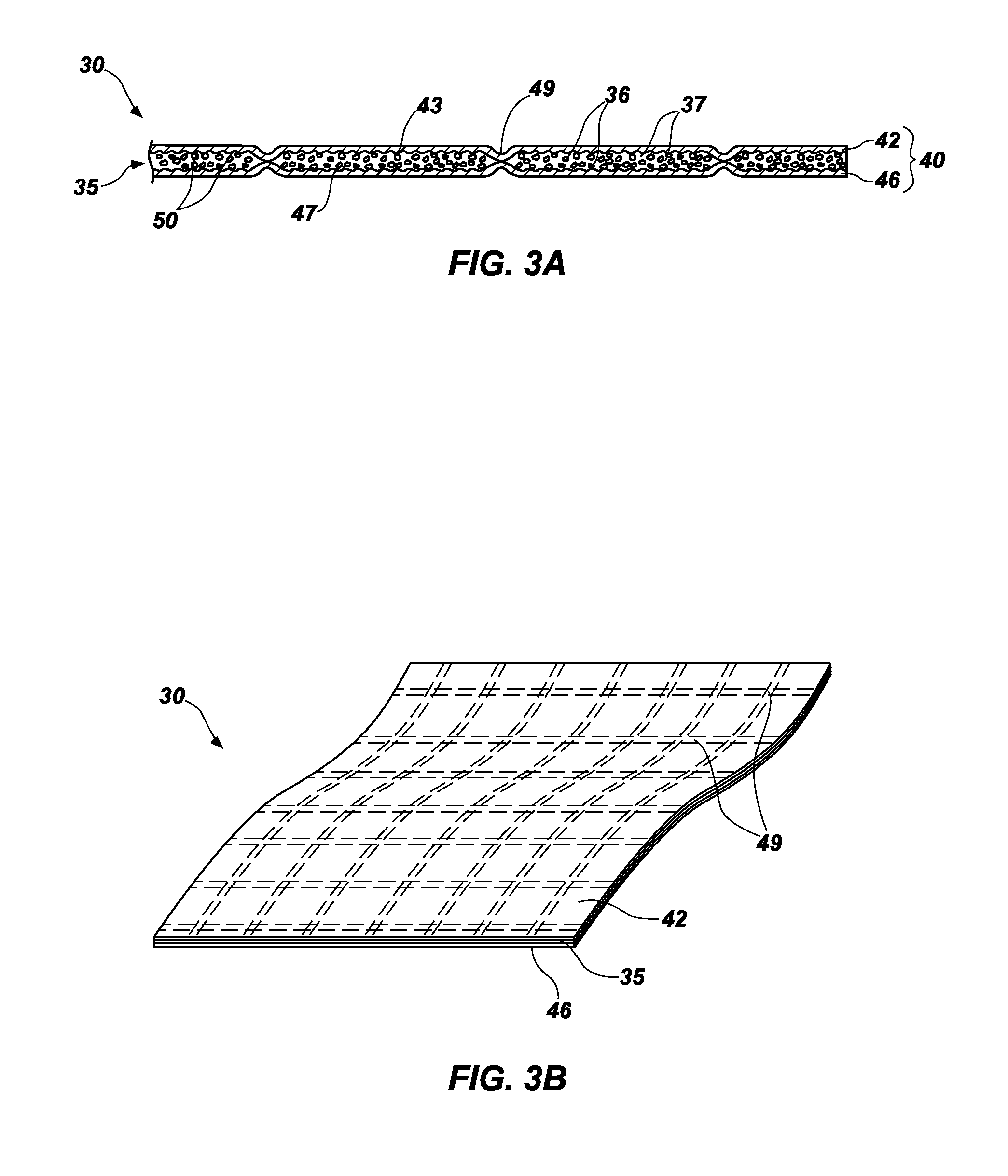Limited-use radiation attenuating shields, liners for radiation attenuating shields and methods
a radiation attenuating shield and limited-use technology, applied in the field of protective shields, can solve the problems of increased use of radiographic procedures, increased risk of long-term damage, each individual, etc., and achieve the effect of preventing the exposure of an individual's brain
- Summary
- Abstract
- Description
- Claims
- Application Information
AI Technical Summary
Benefits of technology
Problems solved by technology
Method used
Image
Examples
Embodiment Construction
[0027]The present invention includes wearable radio-opaque shields, or radiation attenuating shields. A wearable radio-opaque shield that incorporates teachings of the present invention is configured to be worn by an individual during exposure to ionizing radiation. In various embodiments, wearable radio-opaque shields may be configured to be worn on or over certain body parts, attenuating ionizing radiation to which such body parts may otherwise be exposed.
[0028]Specific embodiments of wearable radio-opaque shields include, but are not limited to, thyroid collars, caps and ionizing radiation-attenuating garments designed to be worn by an individual (e.g., a healthcare provider, such as a doctor, a physician's assistant, a nurse, a technician, etc.; security personnel; etc.) while the individual is exposed to ionizing radiation (e.g., during a medical procedure; in using x-ray scanners; etc.).
[0029]FIG. 1 depicts an embodiment of wearable radio-opaque shield that incorporates teachi...
PUM
| Property | Measurement | Unit |
|---|---|---|
| time | aaaaa | aaaaa |
| thickness | aaaaa | aaaaa |
| thickness | aaaaa | aaaaa |
Abstract
Description
Claims
Application Information
 Login to View More
Login to View More - R&D
- Intellectual Property
- Life Sciences
- Materials
- Tech Scout
- Unparalleled Data Quality
- Higher Quality Content
- 60% Fewer Hallucinations
Browse by: Latest US Patents, China's latest patents, Technical Efficacy Thesaurus, Application Domain, Technology Topic, Popular Technical Reports.
© 2025 PatSnap. All rights reserved.Legal|Privacy policy|Modern Slavery Act Transparency Statement|Sitemap|About US| Contact US: help@patsnap.com



